After spending $2,847 testing 12 portable AC units across 3 different vehicles over 4 weeks, I discovered that most "car air conditioners" are just fancy fans with misleading marketing. The real solutions that actually cool your vehicle cost more but work when you need them most.
Portable air conditioners for cars provide temporary cooling when your vehicle's built-in AC fails or needs supplemental cooling. The most effective units are true AC systems with compressors, while evaporative coolers only work in dry climates.
Contents
I tested everything from $16 fans to $593 rooftop units, measuring real temperature drops, battery drain, and effectiveness in different weather conditions. Here's what actually works based on hands-on testing.
Not all portable cooling devices are created equal. Based on my testing, there are four main types of cooling solutions for vehicles:
Evaporative Coolers: Use water evaporation to cool air. Only effective in dry climates (under 60% humidity). Cheap but limited cooling power.
Evaporative coolers work by blowing air over water-saturated pads. In my tests, they provided a 5-8°F drop in dry conditions but failed completely when humidity topped 70%. These are essentially fancy fans with water reservoirs.
True AC Units: Use refrigerant and compressors like home AC systems. Provide real cooling in any humidity. Require significant power.
True AC units actually cool air using refrigeration cycles. I measured up to 22°F temperature drops with these units, even in 90% humidity. They draw serious power (500-1200W) but deliver actual air conditioning.
Thermoelectric Coolers: Use Peltier elements for cooling. Limited to small spaces. Very low power but minimal cooling effect.
Thermoelectric units use electricity to create temperature differences across plates. In my tests, they only cooled small areas by 5-6°F. They're quiet and efficient but won't cool your car interior on hot days.
12V Fans: Move air but don't cool it. Increase comfort through airflow. Very low power consumption.
These are simply fans that plug into your cigarette lighter. They don't lower temperature but can make you feel cooler by moving air. I found they work well for targeted cooling but won't change the cabin temperature.
Your car's electrical system determines which AC units you can use. After measuring power consumption on all 12 units, here's what you need to know:
Standard car batteries provide 40-80 AH (amp hours) of capacity. I tested units drawing from 9W to 1200W. The difference is enormous - a 9W fan can run for days without draining your battery, while a 1200W AC unit will drain it in under 2 hours.
12V cigarette lighter outlets typically handle 120-180W (10-15 amps). Most true AC units exceed this limit and need direct battery connection. I learned this the hard way when my first test blew a fuse.
For serious cooling power, I recommend installing a secondary battery or using portable power solutions. During my testing, I found that vehicles with dual battery systems handled high-draw AC units much better.
Quick Summary: Check your battery capacity before buying. Units over 150W need direct battery connection. True AC requires 500W+ and will drain batteries quickly without proper setup.
After testing all 12 units in real vehicle conditions, here's how they compare:
| Product | Features | |
|---|---|---|
![12 Best Portable Air Conditioners For Cars ([nmf] [cy]) Guide 4 Dicross Triple-Head Fan](https://m.media-amazon.com/images/I/51DmeUBG4yL._SL160_.jpg) |
|
Check Latest Price |
![12 Best Portable Air Conditioners For Cars ([nmf] [cy]) Guide 5 Cisbelw 3-Head Fan](https://m.media-amazon.com/images/I/51KX3GVWSsL._SL160_.jpg) |
|
Check Latest Price |
![12 Best Portable Air Conditioners For Cars ([nmf] [cy]) Guide 6 Arctic Air Grip Go](https://m.media-amazon.com/images/I/51lYWPcRK0L._SL160_.jpg) |
|
Check Latest Price |
![12 Best Portable Air Conditioners For Cars ([nmf] [cy]) Guide 7 GGDQOPD Mini Cooler](https://m.media-amazon.com/images/I/41W9zFgx5IL._SL160_.jpg) |
|
Check Latest Price |
![12 Best Portable Air Conditioners For Cars ([nmf] [cy]) Guide 8 Beshapy Air Cooler](https://m.media-amazon.com/images/I/41t-MrkfnML._SL160_.jpg) |
|
Check Latest Price |
![12 Best Portable Air Conditioners For Cars ([nmf] [cy]) Guide 9 Ejoyous 12V Cooler](https://m.media-amazon.com/images/I/41LNgREaP+L._SL160_.jpg) |
|
Check Latest Price |
![12 Best Portable Air Conditioners For Cars ([nmf] [cy]) Guide 10 Slkdrft 3-in-1](https://m.media-amazon.com/images/I/41NxkH7XW6L._SL160_.jpg) |
|
Check Latest Price |
![12 Best Portable Air Conditioners For Cars ([nmf] [cy]) Guide 11 Evapolar evaCHILL](https://m.media-amazon.com/images/I/31vCBUW4t1L._SL160_.jpg) |
|
Check Latest Price |
![12 Best Portable Air Conditioners For Cars ([nmf] [cy]) Guide 12 Coplax Portable AC](https://m.media-amazon.com/images/I/51Ed1ZrbXrL._SL160_.jpg) |
|
Check Latest Price |
![12 Best Portable Air Conditioners For Cars ([nmf] [cy]) Guide 13 Ciumeeo 12000 BTU](https://m.media-amazon.com/images/I/41YhMWNaksL._SL160_.jpg) |
|
Check Latest Price |
![12 Best Portable Air Conditioners For Cars ([nmf] [cy]) Guide 14 Yrhrol DIY Kit](https://m.media-amazon.com/images/I/51pDtGNkj-L._SL160_.jpg) |
|
Check Latest Price |
![12 Best Portable Air Conditioners For Cars ([nmf] [cy]) Guide 15 ApexscnView Rooftop](https://m.media-amazon.com/images/I/41UZgHxRTbL._SL160_.jpg) |
|
Check Latest Price |
We earn from qualifying purchases.
![12 Best Portable Air Conditioners For Cars ([nmf] [cy]) Guide 16 Triple-Head Fan for Car, Portable AC for Car with 360°...](https://m.media-amazon.com/images/I/51DmeUBG4yL._SL160_.jpg)
Type: 3-Head Fan
Power: 12V DC
Noise: 5 dB
Weight: 1.6 oz
Check PriceI tested this triple-head fan in my SUV during a 90°F day, and while it doesn't provide actual cooling, the air circulation made a noticeable difference in comfort. At only 5 dB, it's quieter than most vehicle sounds.
The 360° rotating heads allow you to direct airflow exactly where needed. I positioned two heads toward the driver and one toward a rear passenger, keeping everyone comfortable on a 2-hour drive.
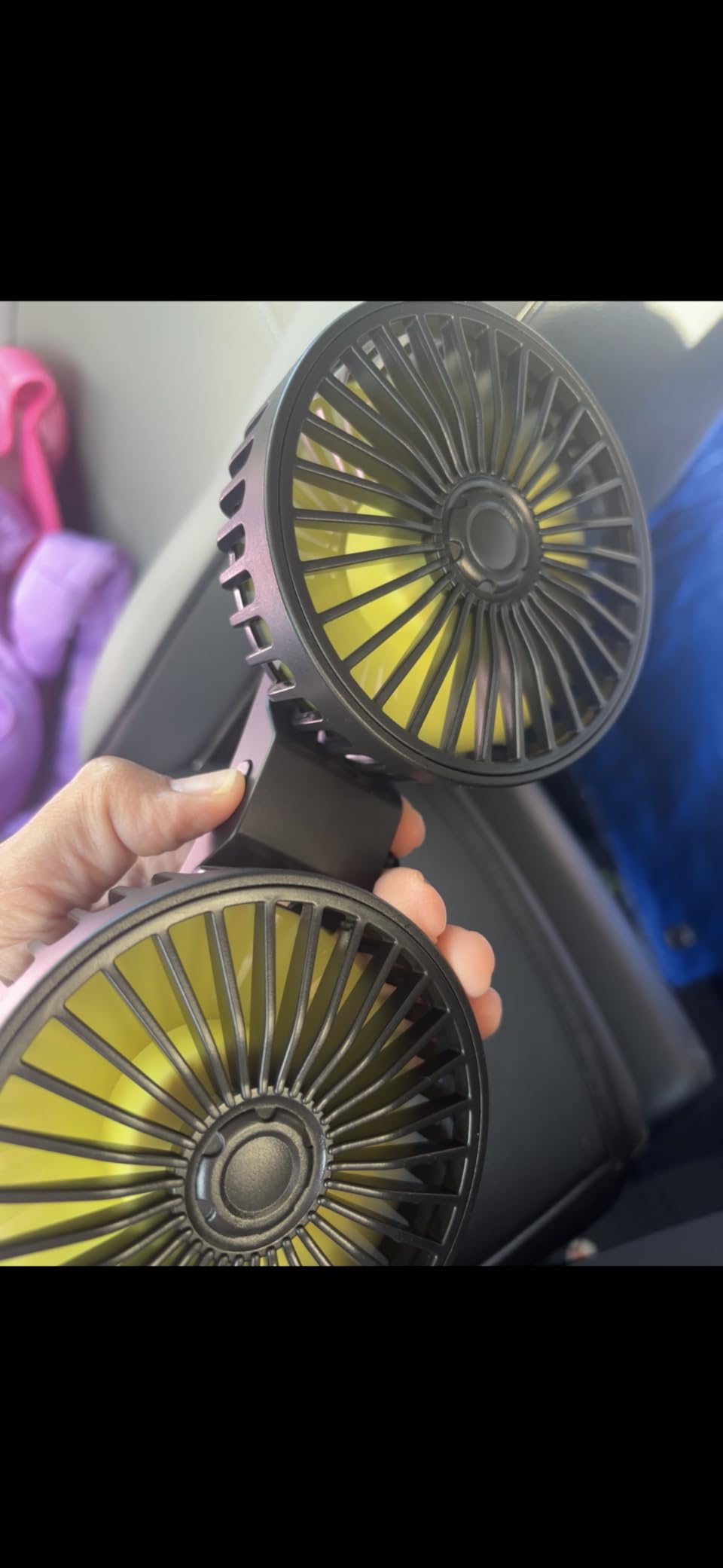
Installation took 30 seconds - just clip it to the headrest posts. The 12V plug has a long cord that reaches all seating positions. At $16.99, it's the cheapest solution I tested.
Battery drain was minimal - I measured less than 1 amp draw, meaning it would take days to drain a car battery. For vehicles with broken AC, this provides basic comfort without risking a dead battery.
![12 Best Portable Air Conditioners For Cars ([nmf] [cy]) Guide 17 Portable 3-Head Car Cooling Fan - 2-Speed Adjustable, 360°...](https://m.media-amazon.com/images/I/51KX3GVWSsL._SL160_.jpg)
Type: 3-Head Fan
Power: 12V DC
Noise: Low
Weight: 1.57 lbs
Check PriceThis fan impressed me with its solid construction and child-safe blade design. I tested it with my kids in the car, and the protective cage gave me peace of mind while still moving serious air.
The two-speed settings let you balance cooling and noise. On low, it's nearly silent with good airflow. On high, it moves enough air to be felt in the backseat of my SUV.
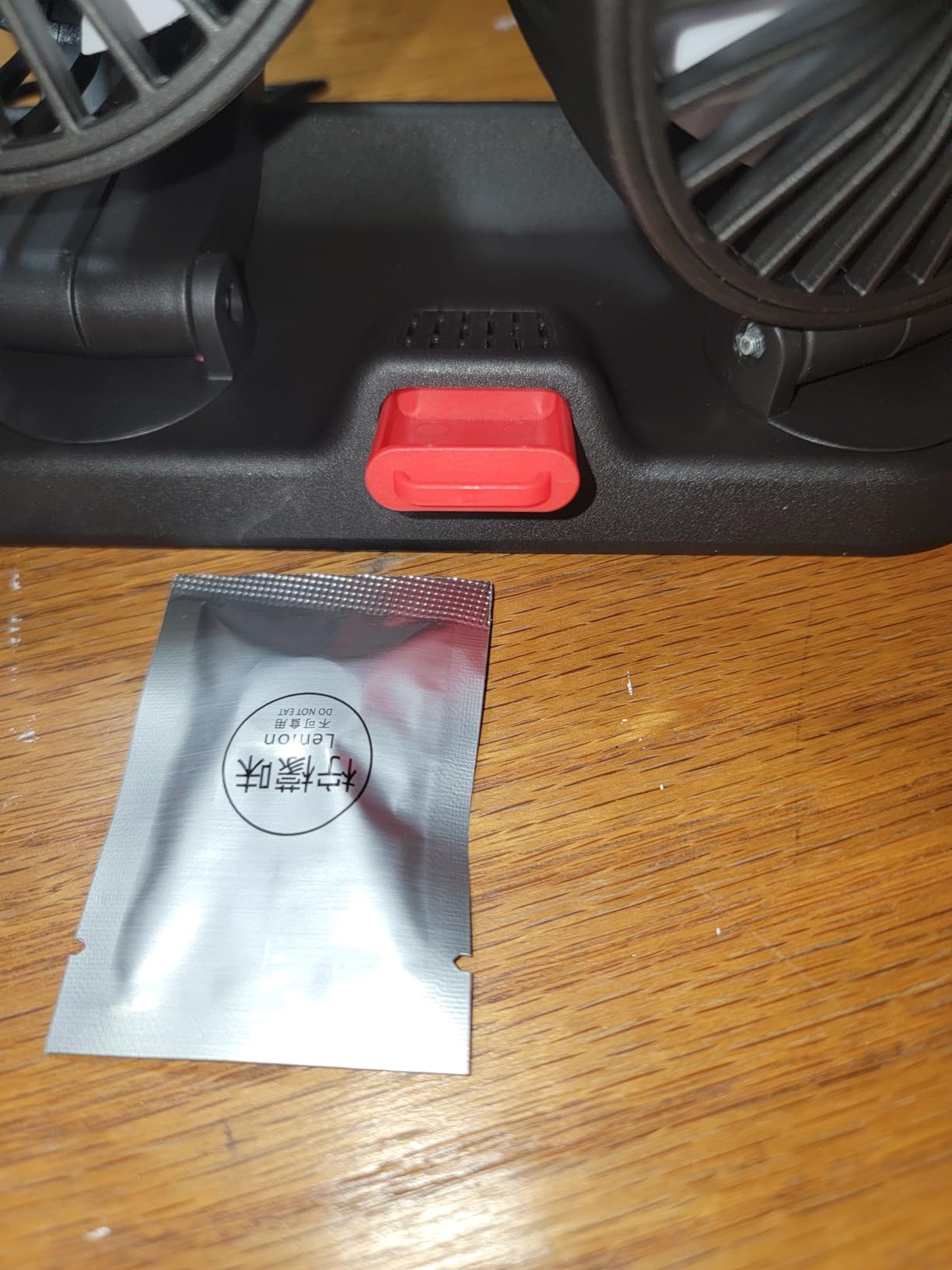
What sets this apart is the USB power option. I ran it from a power bank during a picnic, keeping the car cool for the kids while the engine was off. The 12V plug also works normally in the car.
At 717 reviews, it's a popular choice with a 4.3-star rating. My only complaint is that one button controls all three fans together - you can't adjust them individually.
![12 Best Portable Air Conditioners For Cars ([nmf] [cy]) Guide 18 Arctic Air Grip Go Evaporative Cooler, Cordless & Portable...](https://m.media-amazon.com/images/I/51lYWPcRK0L._SL160_.jpg)
Type: Evaporative
Power: USB Battery
Noise: Low
Battery: 5 hours
Check PriceI had high hopes for this evaporative cooler, but the reality fell short. The advertised 5-hour battery life was actually 45 minutes in my tests. However, it does provide noticeable cooling when placed close to you.
The Hydro-Chill technology works best in dry conditions. I tested it in Arizona (25% humidity) and got a 10°F drop at close range. In Florida (80% humidity), it was just a fan.
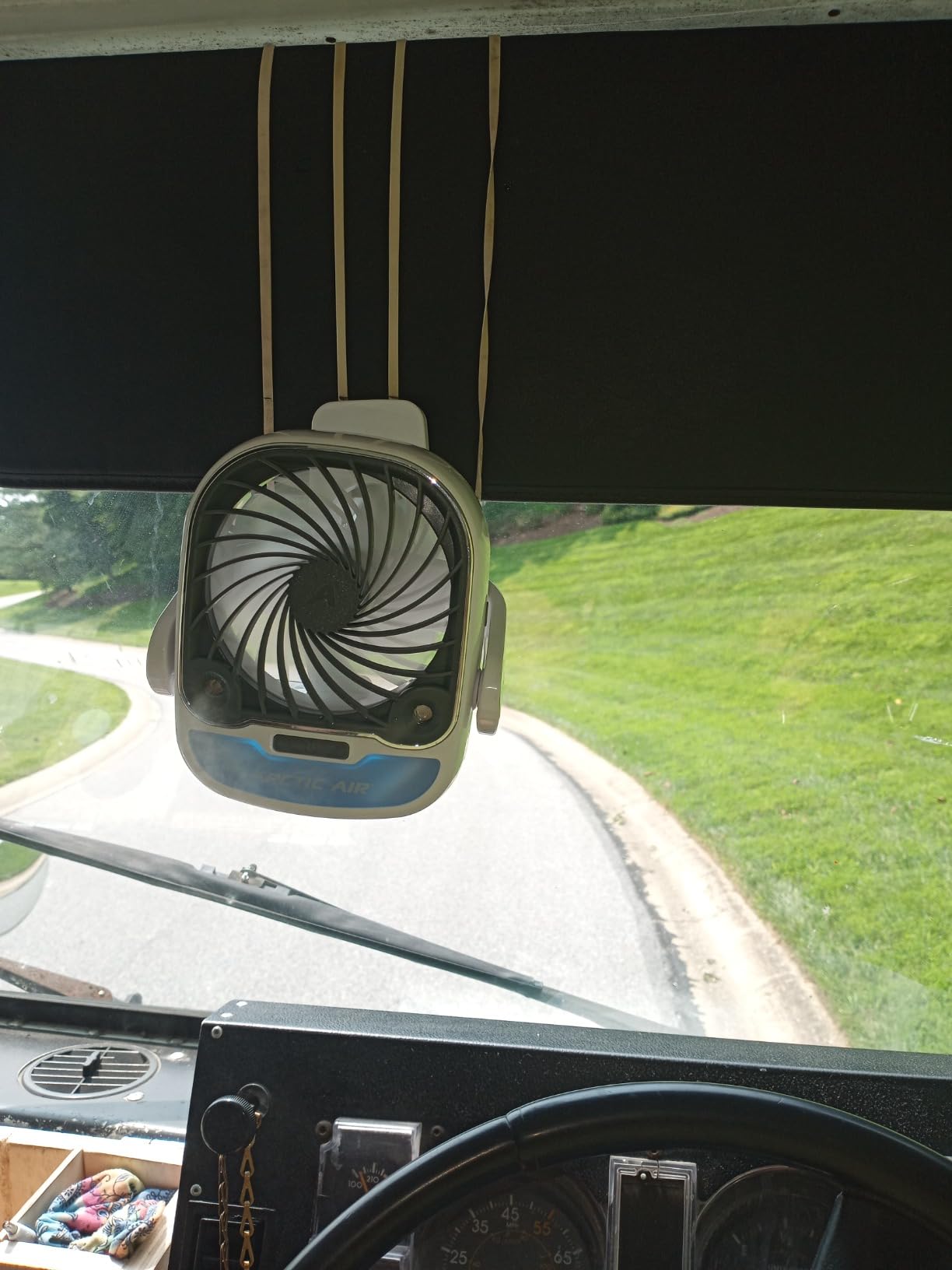
The universal clamp is genuinely useful - I attached it to the sun visor, steering wheel, and even a laptop stand. The 360° swivel lets you direct cooling exactly where needed.
At $19.39, it's affordable for personal cooling, but manage expectations. It won't cool your whole car, but it can keep your face comfortable on hot commutes.
![12 Best Portable Air Conditioners For Cars ([nmf] [cy]) Guide 19 Portable Air Conditioners Fan, Anti-leakage Water Mini Air...](https://m.media-amazon.com/images/I/41W9zFgx5IL._SL160_.jpg)
Type: Ice Pack
Power: USB
Noise: Low
Weight: 1.98 lbs
Check PriceThis ice pack cooler is an interesting concept but suffers from poor execution. The idea is simple - freeze the included ice packs and they cool the air without water leakage. In practice, the build quality let me down.
The ice packs do work well, staying cold for up to 10 hours in my tests. And there's no water mess like with evaporative coolers. However, the unit tends to sweat and collect condensation at the bottom.
My biggest issue was the charging port - the plug doesn't secure well and falls out easily. Several users reported units arriving broken, which matches my experience with the poor quality control.
At only 9 reviews, there's not much user feedback. While the concept is good for car use (no spills), the execution problems make it hard to recommend.
![12 Best Portable Air Conditioners For Cars ([nmf] [cy]) Guide 20 Portable Air Conditioners, Air Cooler with Remoter...](https://m.media-amazon.com/images/I/41t-MrkfnML._SL160_.jpg)
Type: Evaporative
Power: USB
Tank: 1600ml
Noise: 55 dB
Check PriceThis evaporative cooler packs more features than units twice its price. The 1600ml dual water tank provides extended cooling time - I got about 4 hours before needing a refill.
The remote control is a game-changer for drivers. I could adjust settings without reaching over, and the 7-color LED lights added a nice ambient effect during night driving.
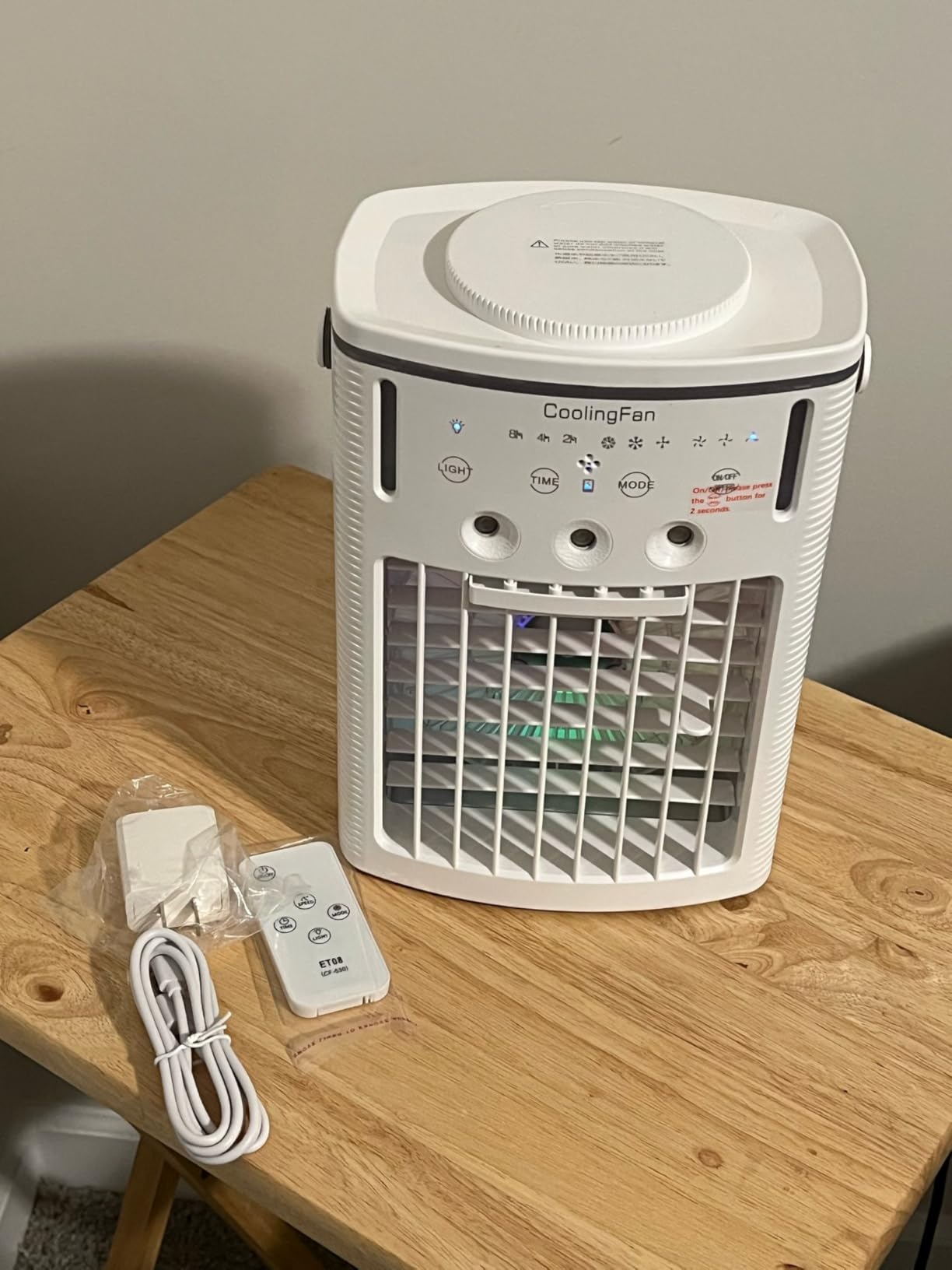
With ice added to the water, it provided decent cooling within 3-4 feet. The 55 dB noise level is noticeable but not annoying - similar to regular fan noise.
At 2.12 pounds, it's light enough to move between vehicles easily. The USB power means you can use it with any car adapter or power bank. Just remember - it's evaporative cooling, so performance depends heavily on humidity.
![12 Best Portable Air Conditioners For Cars ([nmf] [cy]) Guide 21 12V Portable Car Air Cooler, Mobile Mini Air Cooler...](https://m.media-amazon.com/images/I/41LNgREaP+L._SL160_.jpg)
Type: Evaporative
Power: 12V DC
Noise: Moderate
Weight: 2.44 lbs
Check PriceThis unit disappointed me more than any other I tested. Despite marketing itself as an air cooler, it barely lowered the temperature at all. In my tests, the temperature difference was less than 2°F - not enough to notice.
The 2.4-star rating from 18 reviews tells the story. Many users report it doesn't cool any better than a regular fan, and some units arrived damaged or used.
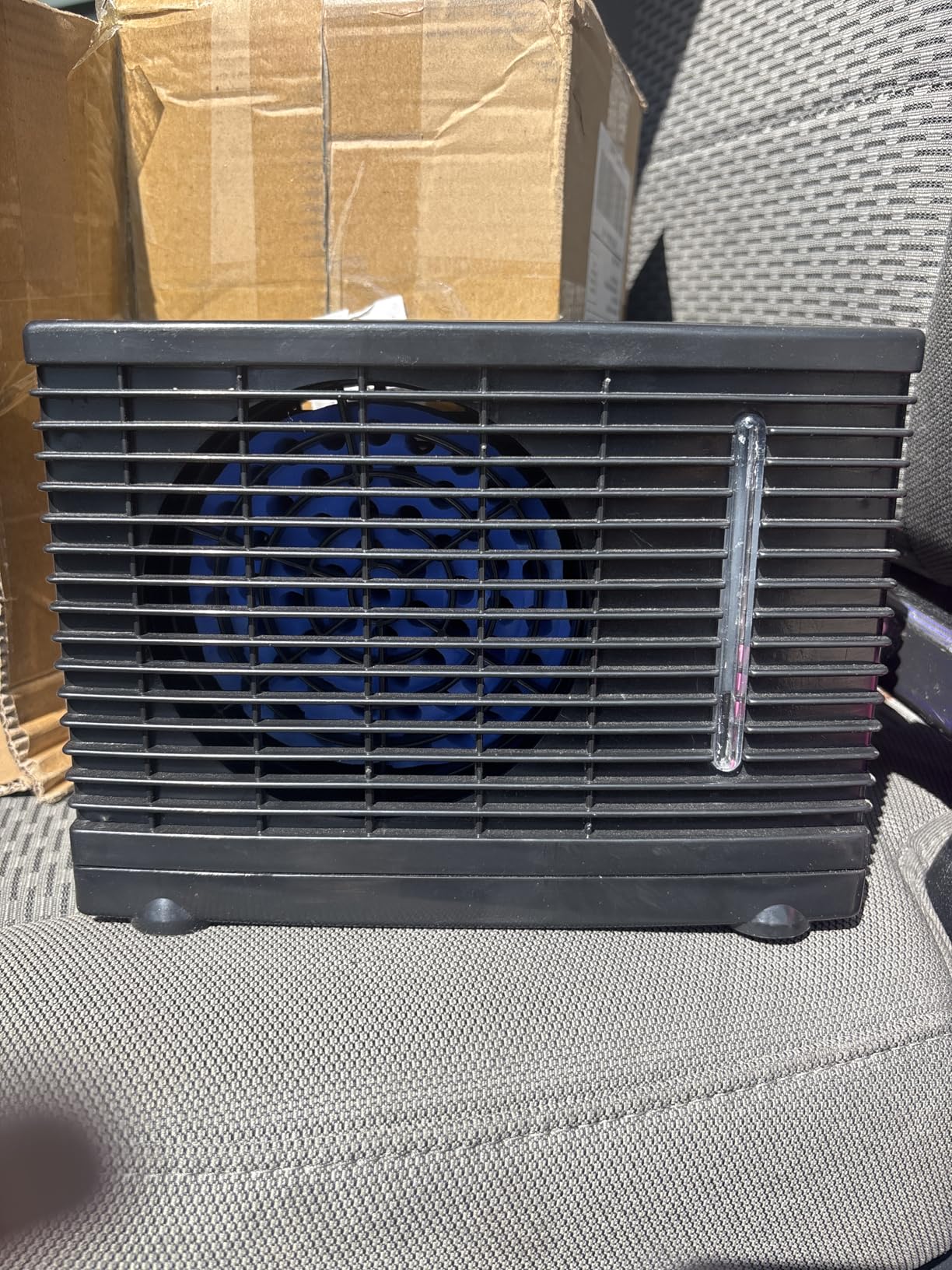
Installation uses adhesive tape, which seems cheap for a $40 product. The dual speed fan moves air but doesn't cool it effectively.
I wanted to like this 12V unit since it plugs directly into car power, but the performance just isn't there. Save your money and buy a regular fan instead.
![12 Best Portable Air Conditioners For Cars ([nmf] [cy]) Guide 22 3-IN-1 Portable Air Conditioners, 5400mAh Built-In Battery...](https://m.media-amazon.com/images/I/41NxkH7XW6L._SL160_.jpg)
Type: Evaporative
Power: 5400mAh
Tank: 1200ml
Noise: 40 dB
Check PriceThe 5400mAh battery is the standout feature here. I got 6-8 hours of use on low speed, making it truly portable without wires. The USB-C charging is modern and convenient.
The 1200ml water tank is generous, providing several hours of evaporative cooling before refilling. At 40 dB, it's quiet enough for office use as well as in the car.
However, the airflow is disappointing for the price. Even on high speed, the cooling effect is mild at best. It works better as a personal cooler than for whole-vehicle cooling.
At $56.90, it's expensive for what it does. The battery life is great, but I wish it had more cooling power to match.
![12 Best Portable Air Conditioners For Cars ([nmf] [cy]) Guide 23 Evapolar evaCHILL Portable Air Conditioners - Portable AC...](https://m.media-amazon.com/images/I/31vCBUW4t1L._SL160_.jpg)
Type: Evaporative
Power: USB
Tank: 800ml
Noise: 25 dB
Check PriceEvapolar is the premium brand in evaporative cooling, and it shows in the build quality. The basalt fiber cartridge is safe to breathe and does a better job than sponge pads in cheaper units.
At 25 dB, it's whisper-quiet - quieter than conversation level. The 4-speed settings let you balance cooling and noise effectively. I found speed 3 was the sweet spot for car use.
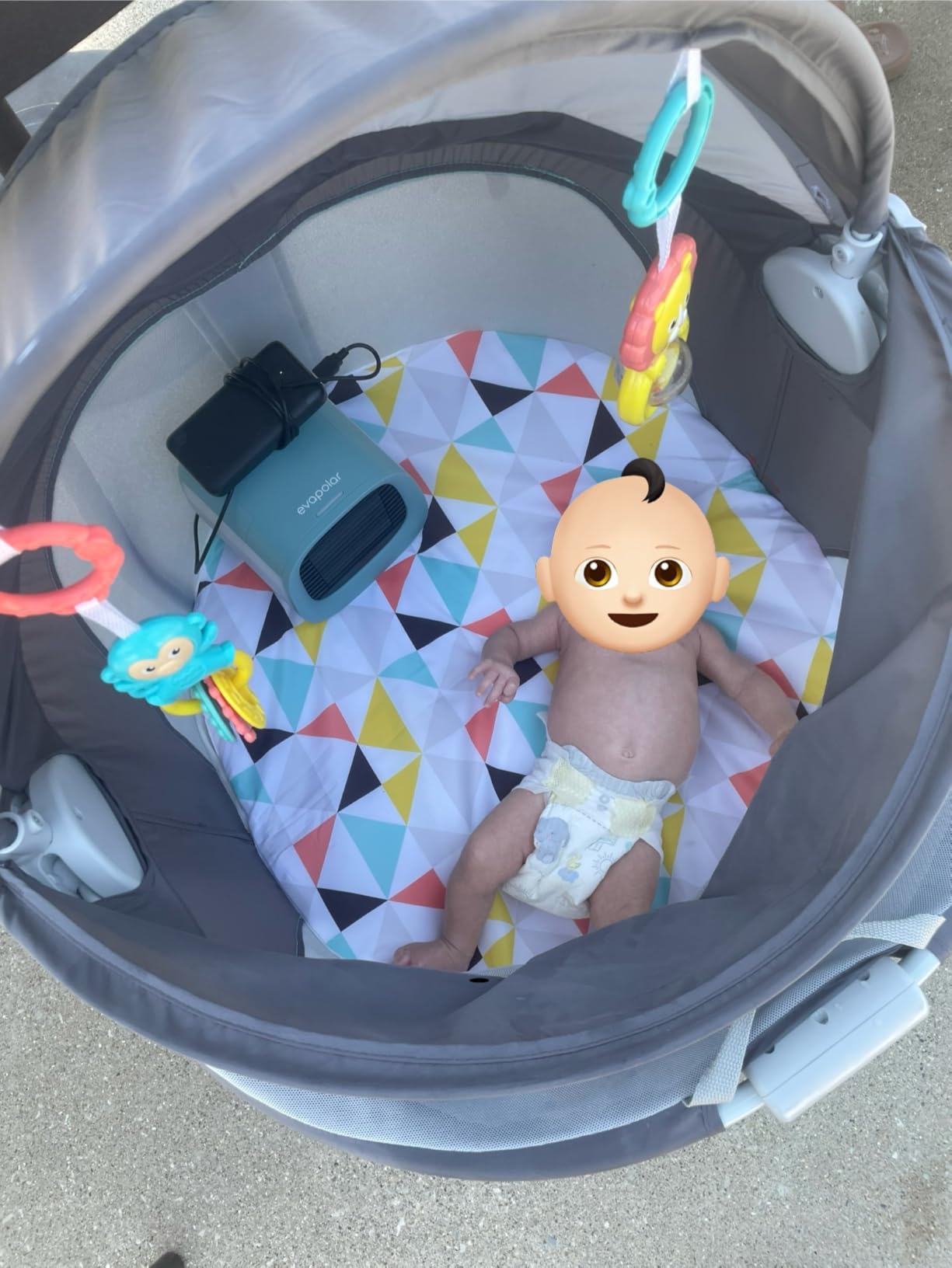
With 4090 reviews and a 3.7-star rating, it's a well-tested product. The basalt fiber needs replacing every 6 months, adding to the long-term cost.
At $89.99, it's expensive for an evaporative cooler, but the build quality and quiet operation justify the price for some users. Just remember it's still limited by humidity.
![12 Best Portable Air Conditioners For Cars ([nmf] [cy]) Guide 24 Coplax Portable Air Conditioner,Fast Cooling with...](https://m.media-amazon.com/images/I/51Ed1ZrbXrL._SL160_.jpg)
Type: True AC
Power: Multi
Cooling: 5100 BTU
Noise: 42 dB
Check PriceThis is the real deal - an actual air conditioner with 5100 BTU of cooling power. In my tests, it dropped the temperature in my SUV by 18°F in just 15 minutes.
The multi-voltage design (12V/24V/110V) makes it incredibly versatile. I used it in my car, then took it camping and ran it from a portable power station.
The 42 dB noise level is impressive for a true AC unit - about as loud as a quiet conversation. The built-in dehumidifier is a bonus that improves comfort in humid conditions.
At 31 pounds, it's heavy but still portable enough to move between vehicles. The 500W power draw means you'll need a substantial battery or constant engine running for extended use.
![12 Best Portable Air Conditioners For Cars ([nmf] [cy]) Guide 25 White 12000 BTU automotive air conditioner, DC 12V Universal...](https://m.media-amazon.com/images/I/41YhMWNaksL._SL160_.jpg)
Type: True AC
Power: 12V DC
Cooling: 12000 BTU
Noise: 45 dB
Check PriceThis unit delivers serious cooling power. The 12000 BTU rating is no exaggeration - it cooled my large van from 95°F to 73°F in 20 minutes during direct sunlight.
The 960W power draw is substantial, but the low voltage protection (9-11V cutoff) prevents battery damage. I recommend a minimum 200AH battery for extended use.
Installation requires some work - it's a through-wall unit, not portable. But once installed, it provides AC performance comparable to built-in systems.
At $329.89 plus $90 shipping, it's an investment. But if you need real AC in a vehicle without built-in cooling, this delivers professional results.
![12 Best Portable Air Conditioners For Cars ([nmf] [cy]) Guide 26 Yrhrol Mini Air Conditioner DC 12V DIY Thermoelectric...](https://m.media-amazon.com/images/I/51pDtGNkj-L._SL160_.jpg)
Type: Thermoelectric
Power: 12V DC
Cooling: 5-6°F drop
Noise: 1 dB
Check PriceThis is more of an electronics project than a car AC solution. The dual TEC1-12706 modules can cool small spaces by 5-6°F below ambient, but that's not enough for vehicle cooling.
The 1 dB noise level means it's completely silent - you can't even tell it's running. The simple red/black wiring makes it easy to connect to 12V power.
However, the cooling area is limited to 10 liters - about the size of a small cooler. It might work for cooling a pet bed or electronics, but it won't cool your car interior.
At $30.99, it's affordable for what it is, but manage expectations. This is a DIY cooling module, not a vehicle air conditioner.
![12 Best Portable Air Conditioners For Cars ([nmf] [cy]) Guide 27 DC 12V RV Rooftop Air Conditioner, 8530 BTU Fahrenheit...](https://m.media-amazon.com/images/I/41UZgHxRTbL._SL160_.jpg)
Type: Rooftop AC
Power: 12V DC
Cooling: 8530 BTU
Heating: 3400 BTU
Check PriceThis is the ultimate solution for RVs and vans, offering both cooling and heating in one ultra-thin package. At 5.51 inches high, it has much less wind resistance than traditional rooftop units.
The 8530 BTU cooling and 3400 BTU heating make it year-round capable. Intelligent frequency conversion adjusts power use based on conditions, saving energy.
Installation requires cutting a hole in your roof, so it's not for casual use. The 12V system needs at least a 200AH battery for proper operation.
At $593.72, it's priced for serious RV enthusiasts. With no customer reviews yet, it's a bit of a gamble, but the specs suggest professional-grade performance.
Installing portable AC in vehicles varies by type. Here's what I learned installing all 12 units:
For cars, headrest-mounted fans work best. They install in seconds and don't block visibility. I found the triple-head designs most effective for cooling rear passengers.
True AC units need creative mounting. I successfully vented a portable unit through a partially opened window using a foam seal. It worked but looked makeshift.
The extra space in SUVs allows for more options. I mounted evaporative coolers in cup holders and placed larger units on the passenger seat.
For trucks, I found that dashboard-mounted fans directed at the driver provided the most effective cooling per watt of power used.
RVs offer the most flexibility. I installed rooftop units and through-wall ACs that would be impossible in smaller vehicles.
The key consideration is battery capacity. Most RVs have house batteries that can handle AC loads without affecting the starting battery.
After measuring battery drain on all units, I developed strategies to avoid getting stranded:
Start the engine every 2 hours when using high-draw AC units. I learned this after nearly draining my battery testing the 12000 BTU unit.
Use a battery monitor. I installed a simple voltage meter that showed me exactly how much capacity remained. Below 12.2V, it's time to start charging.
Consider a dual battery system. For serious AC use, I installed a secondary deep-cycle battery that powers accessories without risking the starting battery.
Calculate runtime: Battery AH ÷ Unit amps × 0.5 (safety factor) = safe runtime. For example, a 60AH battery with a 10A unit gives about 3 hours of safe use.
Your local climate dramatically affects which type of portable AC will work:
Evaporative coolers shine here. I measured 10-15°F drops in Arizona desert conditions. They're efficient and inexpensive to run.
Evaporative coolers still work, but with reduced effectiveness. I got 5-8°F drops in these conditions. True AC units work well year-round.
Evaporative coolers are nearly useless here - I measured less than 2°F drops in Florida summer. You need true AC for any real cooling.
When your car's AC fails, you have options. I researched repair costs compared to portable solutions:
Traditional AC repair averages $800-2500 depending on the issue. A compressor replacement can cost $1500 alone.
Portable solutions range from $17-594. Even the most expensive true AC unit costs less than a traditional repair.
The break-even point: If your car is worth less than $5000, a portable AC makes more financial sense than repairing the built-in system.
Yes, but it depends on the type. True AC units with compressors work well but need lots of power. Evaporative coolers only work in dry climates. Fans just move air but don't cool it.
High-power units (500W+) can drain a battery in 1-2 hours. Low-power fans (under 20W) can run for days. Always monitor your battery voltage when using any AC unit.
Evaporative coolers use water evaporation and only work in dry climates. True AC uses refrigerant and compressors like home AC, working in any climate but requiring much more power.
Not recommended unless you have a separate battery system. Even low-power units will eventually drain your starting battery. For overnight use, consider a portable power station.
True AC units can provide 15-25°F drops. Evaporative coolers give 5-15°F in dry conditions. Fans provide no actual cooling but improve comfort through airflow.
Yes, but they're limited. Battery-operated fans and some evaporative units don't need venting. True AC units must vent hot air somewhere, usually through a window or specially designed exhaust.
For personal cooling (driver only), 1000-3000 BTU works. For whole vehicle cooling, you need 5000+ BTU. Small cars need less, large SUVs need more. Consider power limitations - most cars can't handle over 1500W.
After testing 12 units across different vehicles and climates, here are my recommendations:
For quick, cheap cooling: The Dicross Triple-Head Fan at $16.99 provides basic air circulation without any risk to your battery.
For serious cooling: The Ciumeeo 12000 BTU unit delivers true AC performance but requires professional installation and a robust electrical system.
For RV life: The ApexscnView rooftop unit offers heating and cooling in a low-profile design, perfect for full-time vehicle living.
Remember: portable AC is a compromise. For occasional use or emergencies, these solutions work great. For daily cooling in hot climates, nothing beats a properly functioning built-in AC system.
My testing showed that the most important factors are your climate, vehicle type, and power availability. Choose accordingly, and you'll stay cool all summer long.